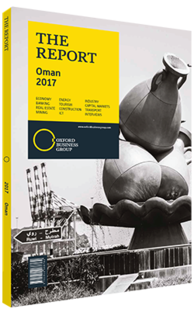Paul Gregorowitsch, CEO, Oman Air, on industry expansion: Interview

Interview: Paul Gregorowitsch
How is the transport industry currently positioned for expected growth?
GREGOROWITSCH: As an airline, one of our mandates is to contribute to the economic growth of the sultanate by creating “air bridges” to bring tourists from abroad, which is good for tourism, and to create business opportunities for people both within Oman and via Oman. The infrastructure to do this is now almost fully available. Muscat’s new airport is almost entirely open. We use the runway, we use the northern apron, we use the traffic tower and the new passenger terminal in Muscat is nearing completion.
In addition, we have the Sohar airport, the Salalah airport – which has been fully operational since 2015 – and the Duqm airport, which will be opened in the course of the next year. Every airport has a seaport right around the corner, which is interesting for the logistics sector, and sea cargo and air cargo together can drive the development of the industry.
While the roads are already among the best in the world, looking at the hotels, they are all boutique, 5-star and up-market, which really only serves a certain niche population that can afford this level.
We do not want to have mass tourism because it would pollute the country and affect the traditions in Oman. But if we want to have a wider contribution to the economy, we need to diversify our holdings in order to attract the broader public to come to the sultanate and spend their holiday dollars here.
What role is played by domestic routes in the greater transport environment?
GREGOROWITSCH: Domestic routes are developed with an eye on the country’s transport master plan and in the context of international routes and expansion plans. Consider the Sohar airport. In the long-term vision, an airport next to the port was envisioned and developed with a plan for further flights to other countries, like India and Iran, which would serve the communities, including businesspeople, living around Muscat and Sohar. However, an airport needs to have enough clientele or enough business in order to become attractive. Due to slower-than-expected economic growth in nearby Iran – in addition to limited allotments from the Indian government – outbound flights from Sohar are not yet happening.
At the same time, there is a natural rule for aviation that every destination within 400 km is better served by surface transportation, either road or rail. Sohar is 119 km away from Muscat. The Ministry of Transport and Communications is currently looking at the prospect of a railway to Sohar, which could be extremely beneficial for both passengers and cargo, as it would connect the capital with the nearest seaport. A connection by air is unfortunately not economically viable.
On the other hand, you have destinations like Salalah, which is much further than 400 km away, so people for the most part do not travel by road. We saw an increase in demand of about 25% in 2016 on the Muscat-Salalah route, which shows that domestic traffic is still a desired proposition for the general public of Oman. Oman Air has also increased capacity considerably to Duqm and Khasab with almost daily operations.
How do you see the new budget airline, Salam Air, impacting the transport market?
GREGOROWITSCH: Salam Air will attract business from different market segments, and we will be able to complement each other in the market instead of cannibalising each other’s market shares.
The market is not yet large enough today, so we have to grow it, and the moment that more tourists from different segments start coming to Oman, it will be important that next to the national airline you also have another value proposition.
In other aviation markets you see both no-frills airlines and full-service airlines operating side by side and we have expectations that Oman will be the same.
You have reached the limit of premium articles you can view for free.
Choose from the options below to purchase print or digital editions of our Reports. You can also purchase a website subscription giving you unlimited access to all of our Reports online for 12 months.
If you have already purchased this Report or have a website subscription, please login to continue.

